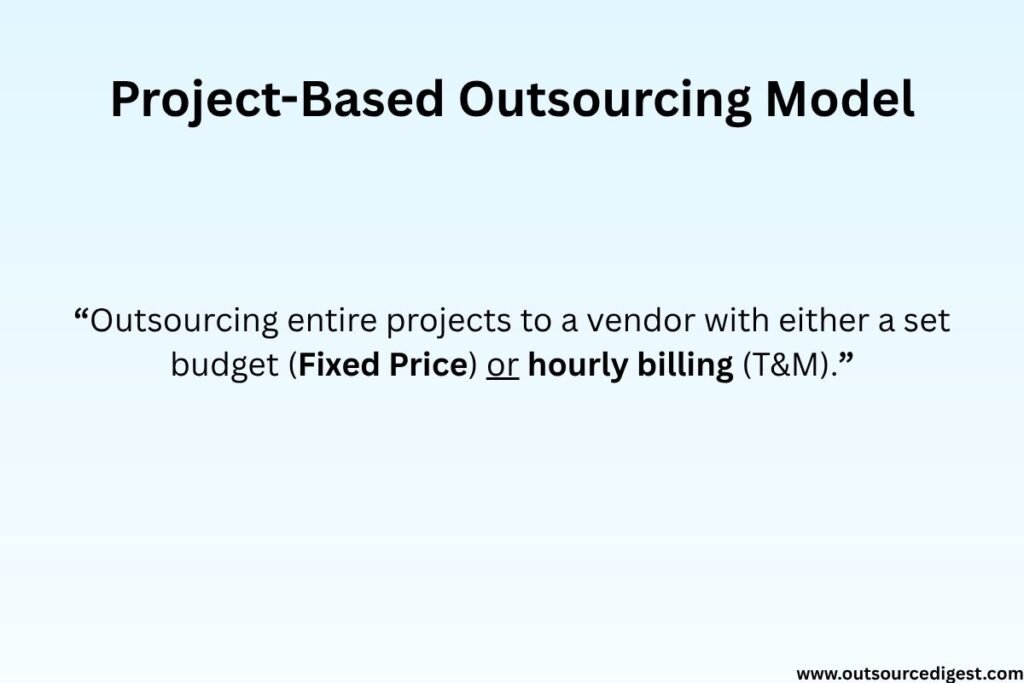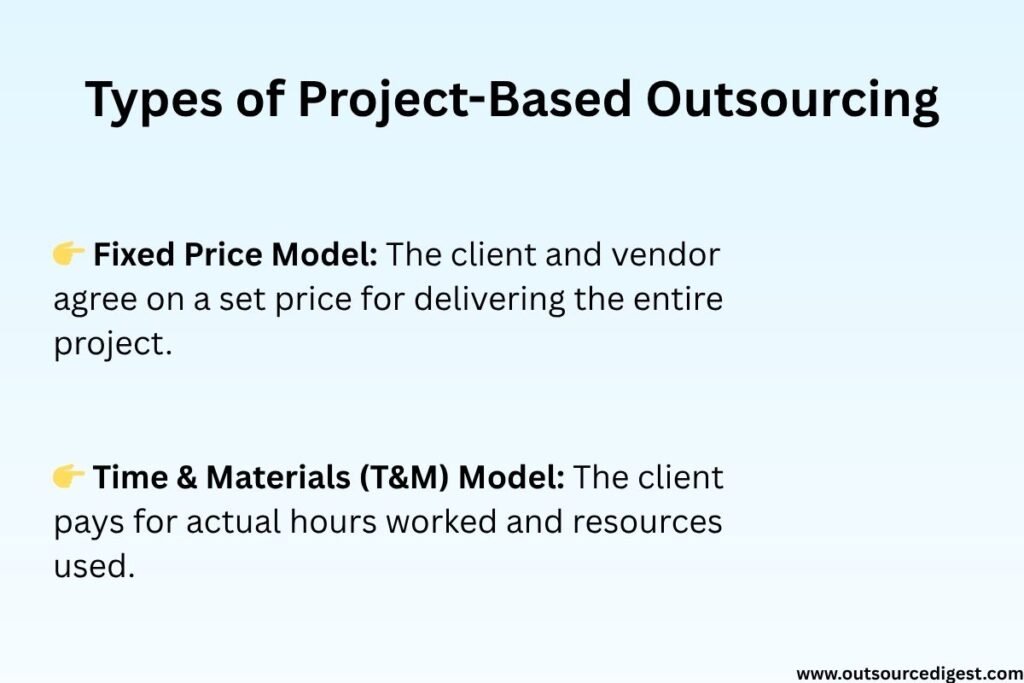The project-based outsourcing Model is one of the most efficient and low-risk strategies for businesses aiming to deliver high-quality software without draining their internal resources.
U.S. companies are choosing this model to handle specific, time-bound projects with clear deliverables.
Whether you’re launching a mobile app, building an MVP, or developing a custom platform, project-based outsourcing allows you to delegate the entire project to an external team, freeing up your in-house staff to focus on core business operations.
It’s ideal for companies that lack the technical expertise in-house or want to accelerate timelines without long-term commitments. Unlike staff augmentation or dedicated teams, this model shifts full responsibility for planning, execution, and delivery to the outsourcing partner.
In this complete guide, we’ll break down how project-based outsourcing works, when it’s the best fit, its key advantages and limitations, and how to choose the right vendor for success.
What Is Project-Based Outsourcing?
Project-based outsourcing is a software development model where a client hires an external vendor to complete a specific project with a clearly defined scope, budget, and timeline. The client entrusts the entire project delivery to the outsourcing company, which handles all development phases from planning and design to implementation and testing.

This model differs significantly from engagement-based outsourcing, such as staff augmentation or dedicated teams, where resources integrate more deeply with the client’s internal teams. Instead, project-based outsourcing is ideal for projects with fixed requirements and goals.
Types of Project-Based Outsourcing Contracts
When using project-based outsourcing, the contract typically follows one of two main pricing models: Fixed Price or Time & Materials (T&M). Each has its advantages and drawbacks, suitable for different types of projects.

1. Fixed Price Model
In the Fixed Price model, the client and vendor agree on a set price for delivering the entire project. The vendor commits to completing the project within the agreed budget and timeline, based on the initial requirements.
Advantages:
- Predictable budget with no surprises.
- Clearly defined scope and deliverables.
- Vendor assumes risk for scope or timeline overruns.
Disadvantages:
- Limited flexibility to adapt to changes once the contract is signed.
- May encourage vendors to minimize costs, potentially affecting quality.
- Requires thorough upfront planning and detailed documentation.
2. Time & Materials (T&M) Model
With the Time & Materials model, the client pays for actual hours worked and resources used. This is more flexible and allows adjustments in scope or priorities during development.
Advantages:
- Adaptable to changing requirements or project scope.
- Suit projects with evolving needs or unclear initial specifications.
- Allows for iterative and agile development.
Disadvantages:
- Budget is less predictable; costs can increase if not managed properly.
- Requires active client involvement to monitor progress and scope.
- Risk of scope creep if not controlled carefully.
| Situation | Recommended Model |
| Well-defined scope and stable requirements | Fixed Price |
| Evolving project scope and priorities | Time & Materials |
| Short-term or one-off projects | Fixed Price |
| Long-term or innovation-driven projects | Time & Materials |
For example, a company launching a straightforward website with fixed features may benefit from Fixed Price, while a startup developing an innovative product might prefer T&M for flexibility.
Benefits of Project-Based Outsourcing
Project-Based Outsourcing offers several benefits:
1. Clear Deliverables and Milestones
Because scope and timelines are agreed upon upfront, clients get well-defined outcomes, reducing ambiguity.
2. Reduced Management Overhead
Vendors take responsibility for planning, execution, and delivery, freeing clients from day-to-day management.
3. Vendor Accountability
The outsourcing company assumes accountability for delivering on time and within budget, incentivizing quality work.
4. Access to External Expertise
Clients can tap into specialized skills and technology stacks that may not exist internally.
5. Cost Control (Especially in Fixed Price)
Budget predictability helps with financial planning and resource allocation.
Challenges of Project-Based Outsourcing
Despite its advantages, project-based outsourcing comes with challenges:
1. Risk of Miscommunication
If requirements are unclear or change frequently, misunderstandings can lead to delays or rework.
2. Limited Flexibility in Fixed Price
Changes during development are harder to accommodate without renegotiation or extra costs.
3. Dependency on Vendor’s Expertise
Quality depends heavily on the vendor’s skills and project management capabilities.
4. Time Zone and Cultural Differences
When outsourcing offshore, communication gaps can occur.
Best Practices for Successful Project-Based Outsourcing
To maximize the benefits and mitigate risks, follow these best practices:
1. Define Clear and Detailed Requirements
Invest time upfront to prepare comprehensive project documentation, specifications, and acceptance criteria.
2. Choose the Right Pricing Model
Match your project’s nature and flexibility needs to the appropriate contract type.
3. Establish Regular Communication
Schedule frequent meetings, progress reports, and use collaboration tools like Jira, Trello, or Slack.
4. Use Agile Practices Where Possible
Even in fixed-price projects, adopting iterative development can improve quality and adaptability.
5. Prepare for Change Requests
Have a formal process for handling changes and scope adjustments.
6. Select Trusted Vendors
Look for proven track records, client references, and technical expertise.
Real-World Examples
- A retail company outsourced the redesign of its e-commerce website under a fixed-price contract, getting a scoped product within budget.
- A tech startup chose T&M to develop its MVP, allowing product features to evolve based on user feedback.
- An enterprise outsourced a CRM integration project with a mix of fixed price milestones and T&M maintenance phases.
Conclusion
Project-Based Outsourcing, whether Fixed Price or Time & Materials, provides a structured, accountable approach to software delivery. Selecting the right model depends on your project’s clarity, flexibility needs, and budget constraints. Applying best practices ensures smooth collaboration and successful outcomes.
Want to explore other models? Check out our guide on Top Software Outsourcing Models Explained (With Examples).
Or dive into the full guide: Software Outsourcing: The Complete Beginner’s Guide (2025)



